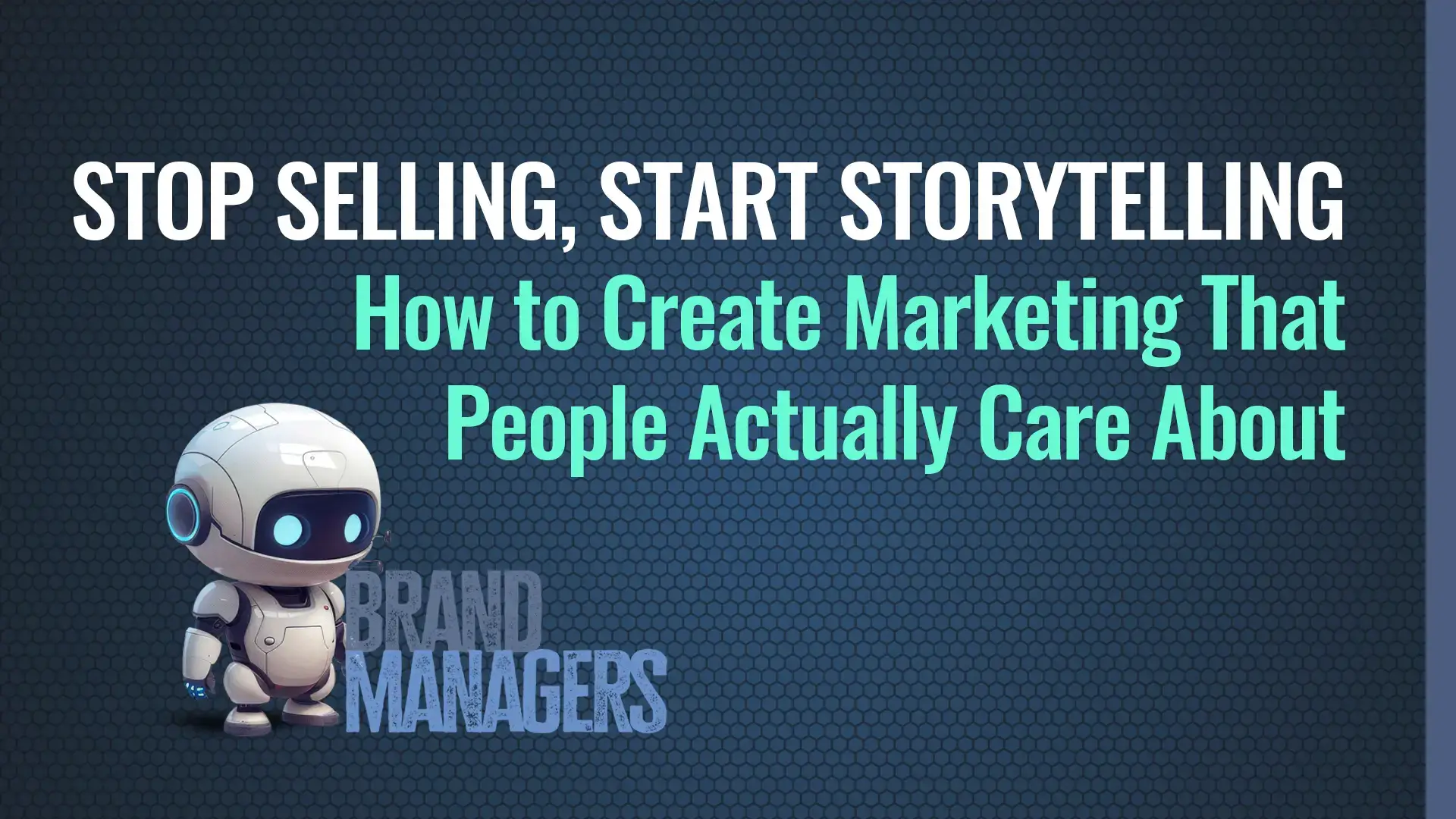How to Create Marketing That People Actually Care About
What You’ll Learn in This Blog
- How to use social media to enhance your brand narrative
- Why storytelling is the most powerful marketing tool
- The biggest mistake businesses make in their marketing
- How to craft compelling stories that resonate with your audience
- Practical steps to implement storytelling in your marketing
- The impact of visual storytelling and emotional engagement
Why Storytelling is the Most Powerful Marketing Tool
Research shows that stories can increase conversion rates by up to 30% (Leapmesh). People don’t remember features, benefits, or corporate jargon. They remember stories. A compelling narrative sticks with your audience, makes your brand relatable, and moves them to action. People don’t remember features, benefits, or corporate jargon. They remember stories.
Traditional sales tactics push people away—nobody likes feeling like they’re being sold to. But storytelling draws people in. It creates an emotional connection, builds trust, and makes your audience feel something. And when they feel something, they take action.
The Problem with Most Marketing
Most businesses focus too much on what they do rather than why it matters. They bombard their audience with facts, product specs, and company history, expecting customers to connect the dots on their own.
Here’s the truth: your audience doesn’t care about your business. They care about how your business solves their problem.
What Makes a Great Story in Marketing?
Some of the most successful brands—Nike, Apple, and Airbnb—have built their marketing around storytelling. Their campaigns don’t just sell products; they create a feeling, a movement, and a connection with their audience. Learning from them can help you craft stories that resonate deeply. A great brand story is not about your company—it’s about your customer. Your audience needs to see themselves in the story and feel like the hero. Your role? You’re the guide who helps them succeed.
- Start with a relatable problem – Show that you understand your audience’s struggles.
- Introduce a solution – Demonstrate how your product or service solves that problem.
- Show the transformation – Help your audience visualize their life after their problem is solved.
- Make it personal – Share real stories, testimonials, and experiences that humanize your brand.
How to Implement Storytelling in Your Marketing
To make your storytelling more compelling, incorporate visual elements such as images, videos, or infographics. Studies show that people retain 65% of visual content compared to only 10% of written content alone. Platforms like LinkedIn, Instagram, and YouTube reward brands that leverage engaging video storytelling. If you want to create marketing that resonates, ditch the corporate talk and start crafting compelling stories. Here’s how:
1. Use Customer Stories & Case Studies
People trust real-world results. Highlight past customers who had the same struggles as your target audience and how your solution transformed their situation.
Example: Instead of saying, “Our software automates invoicing and saves time,” tell the story of a small business owner who was drowning in paperwork and how your software gave them back hours in their week.
2. Tap Into Emotions
Data may inform decisions, but emotions drive them. Use storytelling to create an emotional connection with your audience.
- Fear (What happens if they don’t take action?)
- Hope (What could their life/business look like after working with you?)
- Frustration (Show you understand their pain points and can relieve them.)
3. Create a Clear Brand Narrative
Your brand should have a consistent and clear message woven into all your content. Answer these questions:
- Who do you help?
- What problem do you solve?
- How do you make life better for your customers?
A strong, unified narrative across all platforms builds familiarity and trust.
4. Incorporate Storytelling into Social Media
Your social media posts should do more than promote or educate. Use them to tell behind-the-scenes stories, share client successes, and give insights into your journey.
- LinkedIn: Share lessons learned and customer wins.
- Instagram: Use short videos or carousel posts to illustrate transformation stories.
- Twitter/X: Use threads to break down customer stories or challenges in bite-sized pieces.
Why Storytelling Works Better Than Selling
When you sell, you ask people to buy. When you tell a great story, you invite them into a journey where they see the value for themselves.
Instead of saying, “We offer high-quality lawn care services,” tell the story of a homeowner who struggled with their yard until your team transformed it into a lush green paradise.
Instead of saying, “Our coaching program increases productivity,” tell the story of a burnt-out executive who regained control of their time and doubled their efficiency.
Final Thoughts: Make Your Brand Unforgettable
Facts fade. Features get forgotten. But stories stay with people. The best brands don’t just sell—they inspire, connect, and build relationships through storytelling.
If you want marketing that actually works, stop selling and start storytelling. Your audience will thank you—and more importantly, they’ll remember you.
Need help crafting a compelling brand story? Let’s talk.

